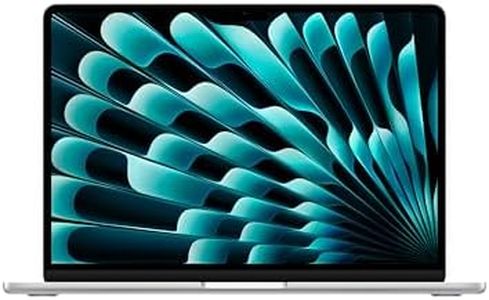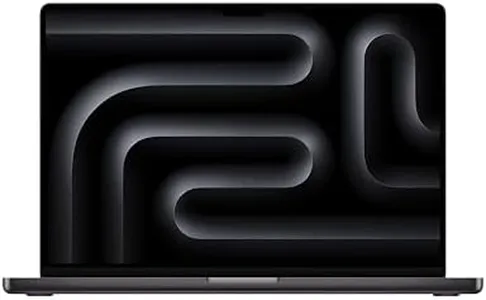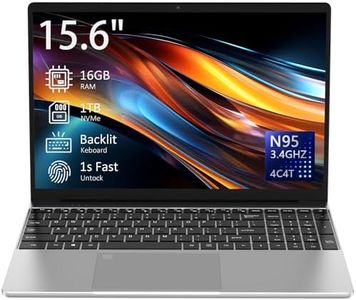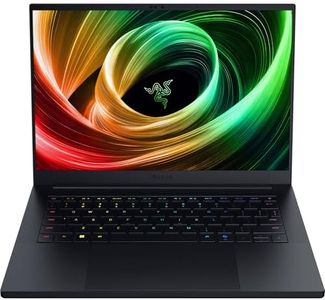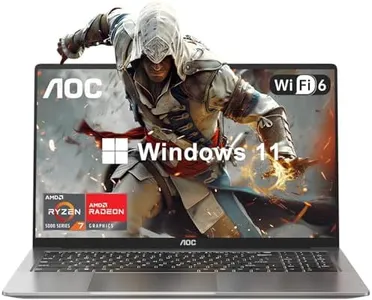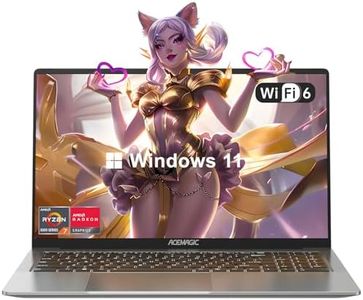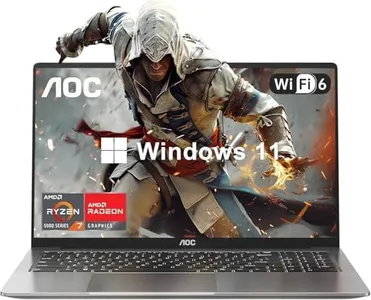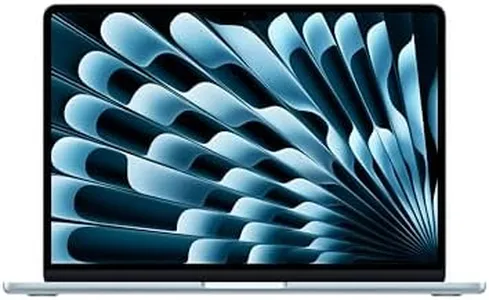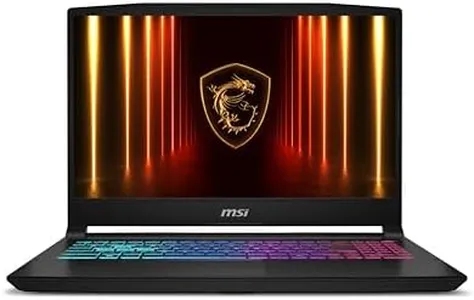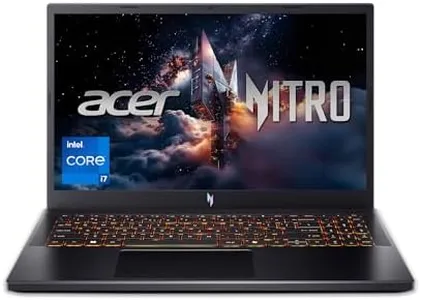10 Best Laptops for Photo Editing 2025 in the United States
Our technology thoroughly searches through the online shopping world, reviewing hundreds of sites. We then process and analyze this information, updating in real-time to bring you the latest top-rated products. This way, you always get the best and most current options available.

Our Top Picks
Winner
Apple 2025 MacBook Air 15-inch Laptop with M4 chip: Built for Apple Intelligence, 15.3-inch Liquid Retina Display, 24GB Unified Memory, 512GB SSD Storage, 12MP Center Stage Camera, Touch ID; Midnight
Most important from
1562 reviews
The Apple 2025 MacBook Air 15-inch with the M4 chip is a strong choice for photo editing thanks to its powerful 10-core CPU and 24GB of unified memory, which helps run editing software smoothly and handle large image files without lag. Its 512GB SSD offers decent storage, though professionals working with very large photo libraries might want additional external storage. The standout feature is the 15.3-inch Liquid Retina display, which supports 1 billion colors and offers sharp, bright visuals with accurate color representation—crucial for photo editing tasks where color precision matters.
The integrated 10-core GPU is efficient and capable of handling graphics tasks typical in photo editing, though it’s not dedicated graphics card power, which might limit performance in very graphics-heavy workflows. Battery life is excellent, providing up to 18 hours of use, making it very portable for photographers on the move. At just over 3 pounds and under half an inch thick, it’s easy to carry around.
Connectivity includes two Thunderbolt 4 ports, a MagSafe charging port, Wi-Fi 6E, and Bluetooth 5.3, covering fast data transfer and external display support. However, the limited number of ports might require adapters for some users. This MacBook Air balances portability, strong performance, and a brilliant display, making it well suited for most photo editors, especially those who value mobility and color accuracy, though users needing extensive storage or very high-end graphics might need extra accessories or a different model.
Most important from
1562 reviews
Apple 2025 MacBook Air 13-inch Laptop with M4 chip: Built for Apple Intelligence, 13.6-inch Liquid Retina Display, 24GB Unified Memory, 512GB SSD Storage, 12MP Center Stage Camera, Touch ID; Silver
Most important from
4345 reviews
The 2025 Apple MacBook Air with the M4 chip is a strong contender for photo editing thanks to its powerful 10-core CPU and integrated 10-core GPU, which deliver smooth performance for image processing and multitasking. The 24GB of unified memory is generous, allowing for efficient handling of large photo files and multiple editing apps simultaneously without slowing down. Storage-wise, the 512GB SSD offers a good balance of speed and capacity, though heavy photo editors might need external drives for extensive libraries. The 13.6-inch Liquid Retina display is a standout feature, offering sharp resolution, 1 billion colors, and wide color support, which is crucial for accurate color work and detail in photo editing.
Battery life is impressive, with up to 18 hours, making it convenient for long editing sessions on the go. At just 2.73 pounds and under half an inch thick, this MacBook is highly portable, perfect for photographers who travel or work in different locations. Connectivity includes two Thunderbolt 4 ports, a MagSafe charging port, Wi-Fi 6E, and Bluetooth 5.3, covering most needs for fast data transfer and peripheral support, though the limited number of ports might require adapters for some users. The integrated GPU is capable but not as powerful as dedicated graphics cards found in higher-end laptops, which may limit performance on very demanding photo editing tasks or advanced 3D graphics work.
For those deeply invested in Adobe Creative Cloud and other professional photo software, the optimized macOS environment and Apple Intelligence features add convenience and security. This MacBook Air suits photographers seeking a lightweight, color-accurate, and reliable laptop for photo editing, especially if portability and battery life are priorities. However, users needing extensive dedicated GPU power or large internal storage might want to consider alternatives.
Most important from
4345 reviews
Microsoft Surface Laptop (2024), Windows 11 Copilot+ PC, 13.8" Touchscreen Display, Snapdragon X Elite (12 core), 16GB RAM, 1TB SSD Storage, Black
Most important from
850 reviews
The Microsoft Surface Laptop (2024) offers a strong package for photo editing, especially if you want a portable, stylish laptop with solid performance. It has a powerful Snapdragon X Elite 12-core processor and 16GB of fast RAM, which will help run photo editing software smoothly. The 1TB SSD is generous, providing plenty of space for large image files and quick access to your projects. The 13.8-inch touchscreen display stands out with a sharp 2304 x 1536 resolution and HDR support, making colors vibrant and details clear, which is important for editing photos accurately.
However, the laptop uses an integrated Adreno graphics chip rather than a dedicated graphics card. While integrated graphics are fine for most photo editing tasks, they might struggle with very heavy or professional-level work that relies on GPU acceleration. The battery life is impressive, offering up to 20 hours, so you can edit photos on the go without worrying about frequent charging. Weighing just under 3 pounds and featuring a slim aluminum design, it’s easy to carry around.
It also supports fast Wi-Fi (802.11ax) and comes with Windows 11 Home, enhanced by AI-powered Copilot+ features that can boost productivity and creativity. This laptop suits photographers and creatives who value portability, a high-quality screen, and solid all-around performance but don’t need a high-end discrete GPU. If your work involves very graphics-intensive editing or video tasks, you might want to consider a laptop with a dedicated graphics card.
Most important from
850 reviews
Buying Guide for the Best Laptops for Photo Editing
Choosing the right laptop for photo editing is crucial to ensure you have a smooth and efficient workflow. Photo editing requires a machine that can handle high-resolution images and complex software without lagging or crashing. When selecting a laptop for this purpose, you need to consider several key specifications that will impact your editing experience. Here are the most important specs to look at and how to choose the best fit for your needs.FAQ
Most Popular Categories Right Now

